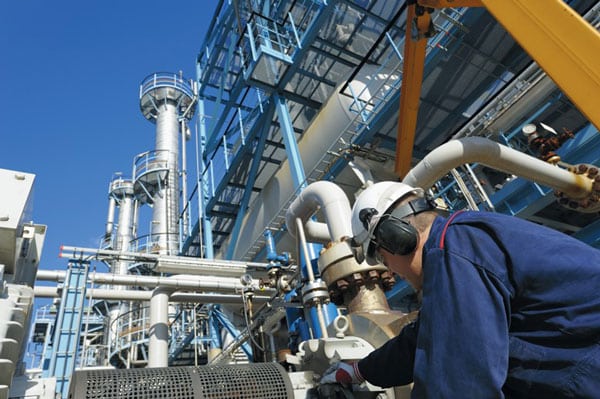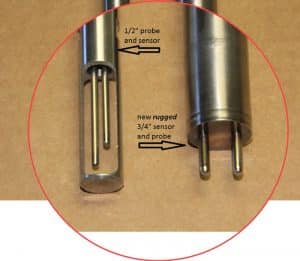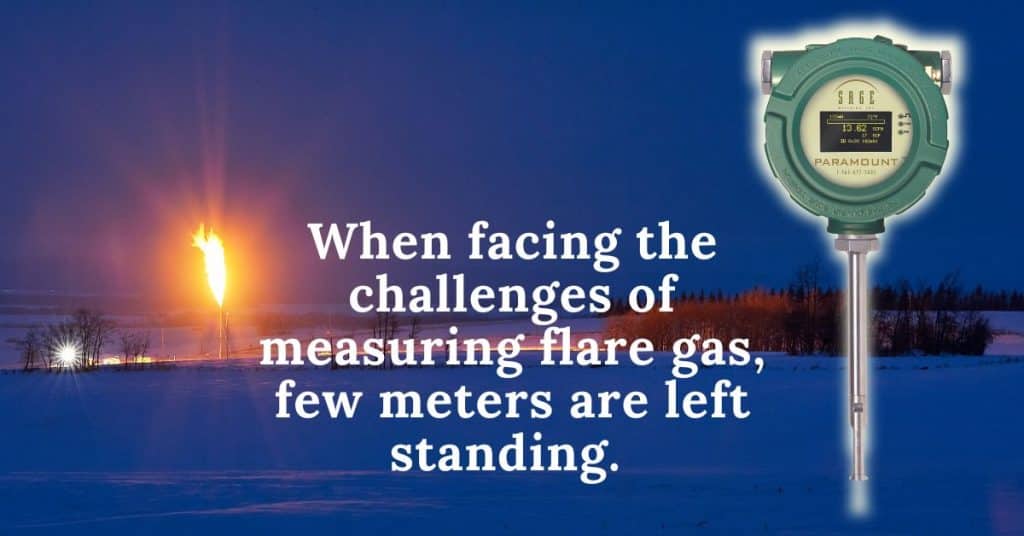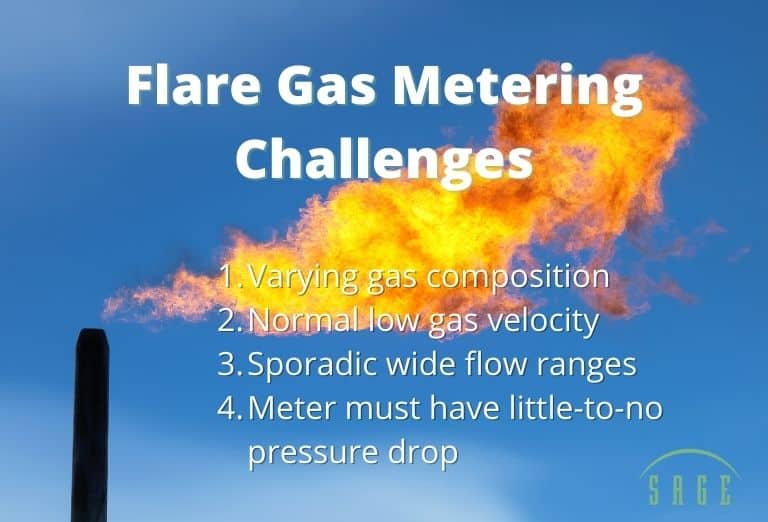Between focusing on reducing methane emissions and natural gas prices reaching historical prices, capturing and reprocessing flare gas is more critical than ever. Accurately measuring flare gas is essential in recovering and repurposing the gas. However, the inherent challenges of flare gases make measuring flare gas a challenge that few meter technologies can overcome.
What is flare gas?
Flare gas is the surplus or waste gas produced in industrial processes. Flare gas systems are utilized worldwide as a safety mechanism to burn flammable gas rather than releasing it into the atmosphere. These systems protect people, equipment, and the environment and are used in oil refineries, oil and gas production, petrochemical processing plants, natural gas plants, wastewater treatment facilities, and landfills.
In the Past
There were no incentives to minimize the amount of gas flared at one time, nor were there significant environmental emission concerns. Accordingly, a combustion device known as the gas flare or flare stack became the go-to solution to consume vast quantities of flare gas.
Today
Today, climate change is a real concern. Within the ‘outcome’ document of the 2021 COP26 UN Climate Change Conference is a methane pledge to cut emissions of greenhouse gases by 2030. This pledge included more than 100 countries. Between the environmental concern and natural gas prices reaching historic highs since 2008 ($9.664 per MMBtu June 2022), capturing and reprocessing flare gas rather than burning it is becoming more critical than ever.
4 Challenges (with Solutions) of Measuring Flare Gases
To select the proper flow meter for a flare gas application, operation and system engineers need to understand the inherent challenges associated with the gas. Because of these challenges, it becomes clear that the thermal mass flow meter is optimum for lateral lines to measure sweep gas, not for emission reporting or determining mass balance at refineries.
1. Flare gas has varying gas compositions.
Flare gas lines at refineries contain a mixture of hydrocarbon gases. While the continuous sweep gas is usually methane, other gases are released into the system from various process units, creating a mix of gases with varying proportions. Since thermal mass flow meters rely on the thermal properties of the gas (or mixture) in which the meter is calibrated, variations in composition affect accuracy. Therefore, thermal mass flow meters are unsuitable for meeting accuracy requirements in emission reporting or determining mass balance at refineries.
As noted earlier, thermal mass flow meters are suitable for lateral lines to measure sweep gas and detect undesired gas leakage into the flare system.
2. Flare gas has low gas velocity in regular operation.
Many flowmeters do not have the sensitivity to measure the lateral line sweep gas because of its very low velocity (flow) during regular operation.
Thermal mass flow meters have excellent low-flow sensitivity and can measure velocities much lower than other flowmeters.
3. Flare gas meters require high rangeability because of low flow to upset conditions.
It is critical to measure a broad range of flow rates, given that there is particularly low flow during regular operation and extremely high flow during an upset condition.
Thermal mass flowmeters have a rangeability of 1000:1, making the technology suitable for flare gas flow applications.
4. Flare meters should have little to no pressure drop.
The pressure in the header system may be very low. The flowmeter must not restrict the gas flow.
Thermal mass flow meter sensors provide minor blockage and virtually no pressure drop.
Oil and Gas Industry – Upstream
The oil and gas industry faces rigorous EPA, state, and local regulations involving flare gas. To maintain compliance, the measurement and reporting of the volume of gas flared or vented at refineries is required.
In a flare gas system, gas flows to the flare when the following conditions occur:
-
- Continuous sweep gas flow provides a positive pressure to prevent the buildup of combustible gas in flare headers
- If gas is released from a pressure-relief valve due to an over-pressurization of plant process equipment
- During operational upsets, interruptions, or emergencies that create the need to depressurize equipment quickly to avoid damage
- Venting of equipment, such as analyzers and gas seals, and incidental leaks
Flare gas recovery and combustion
In response to the EPA’s restrictions on flare emissions, many refineries install flare gas recovery systems upstream of the flare. During regular operation, all flare gas is recovered. This gas is compressed, treated if necessary, and combined with other plant fuel gas to power facility combustion devices.
While thermal mass flow meters are not suitable for measuring flare gas for emissions reporting or mass balance, the technology is excellent for locating flare gas leakage and releases.

Problem: Fugitive emissions in the flare collection line may indicate a loss of raw material, which can be time-consuming and expensive to locate.
At refineries, thermal mass flow meters can quickly identify the area(s) that releases even minor amounts of flare gas. For these purposes, meters are installed in the flare collection line coming from each process unit. Because of the thermal mass flow meter’s excellent low-flow sensitivity, the meter detects the minimal movement of sweep gas, establishing a baseline flow from each process unit. The presence of fugitive emissions, those undesired minor gas releases, and leaks not attributed to an upset condition are detected by a change in flow rate. The flow rate change identifies which process unit is the source of the leak, saving considerable time and expense in investigating the basis of the leaks. For this application, variation in composition is not as crucial as repeatability.
Oil and Gas Production – Downstream
Natural gas is a natural byproduct of oil production. While the oil may be stored and later transported, the recovery of natural gas requires the presence of a gas pipeline. In many cases, the infrastructure is insufficient to transport the natural gas, and it is flared. Even when a gas pipeline exists, the flare is used if the pipeline backs up or equipment shuts down.
Flaring natural gas wastes energy and emits greenhouse gases. There is a global initiative to reduce the amount of natural gas flared. Each state or local district has different rules and requirements on flaring in oil and gas production areas.
Thermal mass flowmeters are ideal for measuring the natural gas flow to the flare or vent for emission reporting purposes, identifying product loss, or simply accounting for the natural gas going to the flare. The thermal mass flow meter provides:
-
- Mass flow measurement without the need for pressure and temperature correction
- High turndown capabilities (May be required depending on production rates. Some operators are replacing orifice meters with thermal mass flow meters to achieve a wider range of gas volume measurements.)
- Low-pressure drop
- Rugged construction and high reliability meet the demanding requirements of the oil field.

Problem: One major oil and gas producer experienced recurrent damage to the thermal mass flow meter’s insertion probe and sensor during high-flow conditions.
An oil and gas producer used a competitor’s thermal mass flow meter to measure natural gas flow in a flare line. They were experiencing frequent failure and breakage of the probe.
The producer suspected that high-velocity flow conditions bent the probe and damaged the sensor, making removal of the probe difficult. The natural gas coming from the well was wet, and ice particles formed because of the significant pressure drop. These ice particles would hit and break the probe. After repeated failures, the client approached Sage Metering to solve the problem.
Sage’s solution was to develop a more extensive, heavy-duty probe and sensor that could withstand the challenging conditions. Also, the customer requested advanced communication protocols to communicate with each flowmeter. Sage Metering solved the client’s problems with its rugged thermal mass flow meter design and Insight communication software.
Parting Shots
When faced with the substantial challenges of measuring flare gas, only a few technologies are left standing, one of which is thermal mass flow measurement. In addition to flow measurement of natural gas in oil and gas production, the thermal mass flow meter may monitor various flare laterals to assist with locating minor flare gas releases within oil refineries for leak detection. The extraordinary rangeability, ease of installation, and low cost make the thermal mass flow meter a notable contender for measuring and monitoring flare gas for the oil and gas industry.
Read “Methane emission sources and monitoring to address climate change” by Bob Steinberg, president of Sage Metering.
Reference:
“The Challenges and Solutions of Flare Gas Metering,” by Wayne Shannon.



